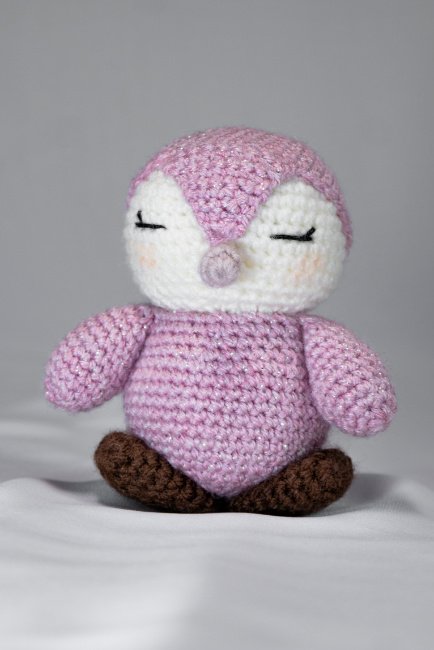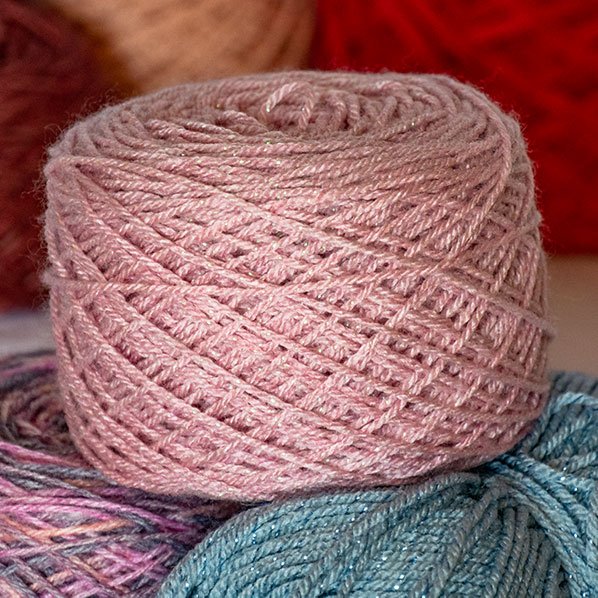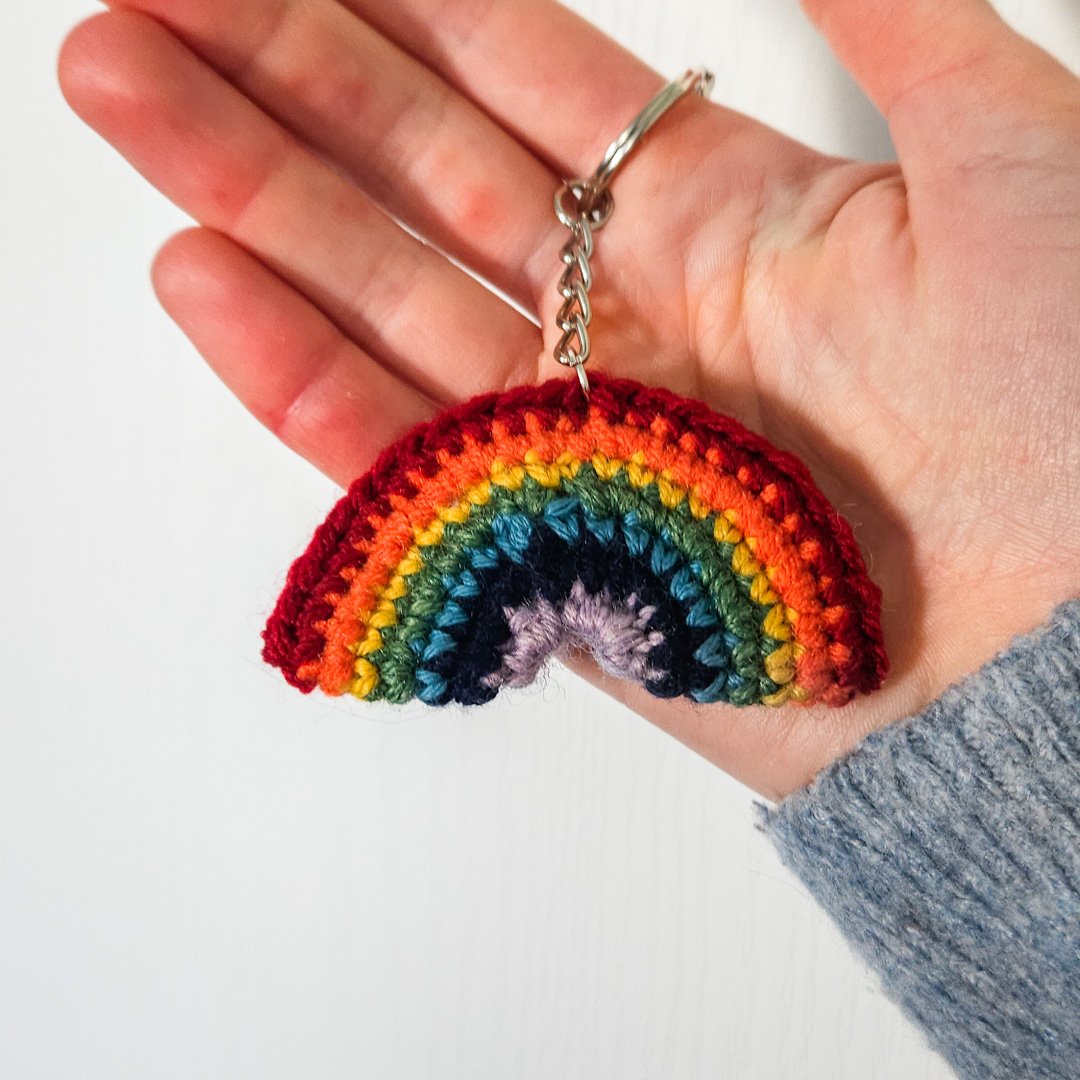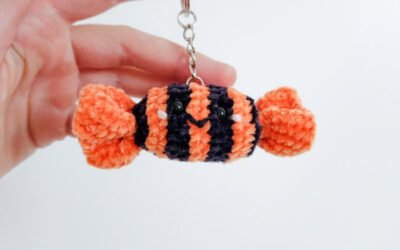Crochet Amigurumi: A Complete Guide for Beginners
What is an amigurumi?
Amigurumi, those adorable little creations made from crochet or knitting, are winning over more and more craft enthusiasts around the world. Whether you’re a crochet beginner or an expert, amigurumi offer a unique opportunity to make cute, personalized objects. But what exactly is an amigurumi, and why are they so popular?
Origin and meaning of “amigurumi”
The word amigurumi comes from Japanese and is made up of two terms:
– “Ami” (編み), which means to knit or crochet.
– “Nuigurumi” (ぬいぐるみ), meaning a stuffed toy or stuffed animal.
Combining these two words, amigurumi literally translates as crocheted or knitted stuffed toy.

The art of amigurumi is deeply rooted in Japanese culture, where it is appreciated for its kawaii (cute) aesthetic. These small figures, often animals, dolls or fantasy characters, embody gentleness and emotion, making them much more than mere decorative objects. This field has developed considerably in recent years, and it’s not hard to find not only cute animals, but also tutorials on how to make characters from TV series or manga.
What makes amigurumi so popular?
Easy to learn for beginners
Contrary to popular belief, amigurumi don’t require years of crochet experience. With just a few basic stitches (such as single crochet, magic circle and increases), you can create your first patterns. Amigurumi are even ideal for beginners, thanks to the detailed patterns now available everywhere.
Unlimited creativity
Amigurumi let your imagination run wild. You can create animals, characters or objects. Their customization – whether in terms of color, texture, detail or expression – is infinite.
At first, it’s best to follow tutorials to make your first stuffed animals a success. But with time and experience, you’ll be able to create your own models from scratch, following only your inspiration to bring cute amigurumi to life.
A perfect, timeless gift
What could be better than a handmade object to give to a loved one? Amigurumi are often used as personalized gifts for birthdays, anniversaries or holidays. They combine sweetness and symbolism, making them particularly popular.
The possibilities for personalization are endless. If your niece loves the color orange, for example, you can make her favorite animal in these shades. You can be sure she’ll treasure the gift for a long time to come!
A passionate and active community
The world of amigurumi brings together a vast community of enthusiasts around the globe. Between groups on social networks, YouTube tutorials and specialized forums, it’s easy to find support and ideas for your projects.
What’s more, each designer is often on hand to help you understand their patterns better, should you get stuck in one place. Some even launch calls for testers before officially publishing their new tutorials in so-called Tester Calls.
In short, amigurumi aren’t just creations made from yarn and crochet: they’re little works of art that embody the love of handmade and the pursuit of cuteness. Whether you’re looking to start a new activity or deepen your crochet skills, amigurumi are a great place to start. So, are you ready to discover this fascinating world?
The essentials to start crocheting amigurumi
Before embarking on the creation of your first amigurumi, it’s essential to equip yourself with the right materials, master a few basic techniques and choose a project suited to your level. This section will guide you step by step to get you started in the best possible conditions.
Materials required: hook, thread, stuffing
You won’t need much equipment to make an amigurumi, but certain tools and materials are essential:
Hook
• Recommended sizes: Amigurumi are generally made with a small crochet hook, between 2 mm and 4 mm, to obtain tight stitches and prevent the stuffing from coming out.
• Which hook to choose? If you’re just starting out, opt for an ergonomic hook to avoid sore hands after long sessions.


The Yarn
• Types of yarn: Cotton yarn is often preferred for amigurumi because of its smooth texture and ability to define stitches. You can also use acrylic or blended wool.
For soft plush:
• Chenille yarn is ideal thanks to its soft texture, although a little more complicated to crochet.
• Fur yarns are perfect for a plush teddy effect, but they make the stitches almost invisible
Tip: moisten the yarn slightly to flatten the hairs and make the stitches more visible.

Stuffing
• Common materials: Polyester stuffing (wadding) is the most widely used material for shaping amigurumi. It’s lightweight, malleable and readily available.
• Ecological alternatives: For a more eco-responsible approach, you can use scraps of fabric or yarn.
Other essential tools
• Stitch markers: to keep track of rows and increases.
• Yarn needle: to assemble the different parts of your amigurumi.
• Safety eyes: perfect for bringing your creations to life, especially if you’re making animals or dolls.
Crochet basics: essential stitches and techniques
Mastering a few points and techniques is enough to get you started with amigurumi :
The essential points
• Magic Circle (mc) : This is the basic method for starting a project. It involves forming a circle with the wool, crocheting into it, then pulling on the yarn to close the hole.
• Single Crochet (sc): This is the main amigurumi stitch, ideal for compact stitches.
• Increase (inc): Add stitches to a row to enlarge a shape.
• Decrease (dec): Reduce the number of stitches to tighten a shape.
Tip: learn how to make invisible decreases by crocheting only in the back strand of the stitches to be decreased, for a cleaner look.
Joining
For complex stuffed animals, we often crochet each part separately (head, body, arms, legs, ears, etc.) before assembling them. This delicate but essential step reveals the full charm of your creation. Take the time to position the different parts correctly before sewing them together.
Tension management
Maintaining even tension is crucial for a uniform result. If your stitches are too loose, the stuffing may stick out. If they’re too tight, the hook will be difficult to handle.
Tip: If several similar parts (such as arms or ears) are to be made, crochet them in the same session. This guarantees identical tension for a balanced result.
The spiral technique
Amigurumi are generally worked in the round, without closing the rows with a cast-on stitch. This method avoids visible demarcations and guarantees an even finish.
Tips for selecting your first project
To avoid frustration and discouragement, choose a project adapted to your level:
Choose a simple design
Basic animals (such as a bear or rabbit) or geometric shapes are ideal for beginners. These projects require few pieces to assemble, which simplifies the process. What’s more, some no-sew projects are ideal for beginners: they’re quicker to make and avoid the tricky step of assembly.
Use thick yarns and a medium-sized hook
A slightly thicker yarn (such as grade 4 cotton) and a 4 mm hook make the stitches more visible, making it easier for you to get started.
Find a clear, well-explained pattern
Look for patterns specially designed for beginners. Many designers offer diagrams, video tutorials or detailed explanations to guide you step by step.
Testing with an amigurumi kit
For a headache-free start, try an amigurumi kit. Everything is included:
• Suitable thread.
• Hook.
• Stuffing.
• Accessories (safety eyes, needle, etc.).
– A detailed pattern, often accompanied by explanatory videos.
These kits let you concentrate on learning without having to search for materials individually.

Here’s an example of an easy-to-make model:
FAQ: Answers to frequently asked questions about amigurumi
Do you still have a few questions before you take the plunge? Here are some answers to the most frequently asked questions, to help you make a success of your creations.
How to avoid common mistakes?
• Maintain even tension
Uneven tension can give your amigurumi a bumpy appearance. Keep your hand relaxed and apply constant pressure to the yarn. If your stitches are too loose or tight, adjust your hook size.
• Use a stitch marker
When working in a spiral, it can be difficult to keep track of the rows. Place a stitch marker on the first stitch of each row to keep track of your work.
• Stuff correctly
Too little stuffing will make your amigurumi flabby, while too much will distort it. Fill gradually and adjust by hand for a harmonious result.
• Read the pattern carefully
Take the time to understand each step before you begin. If you’re not sure about a term or technique, look for instructional videos.
• Take your time
Precision is essential. If you feel tired or impatient, take a break and resume when you’re more focused.
What are the best yarns for amigurumi?
The choice of yarn is crucial for an aesthetic and long-lasting finish:
• Cotton yarn
Why choose cotton yarn? Its smooth texture and strength allow for well-defined stitches.
Examples: DMC Natura Just Cotton, Ricorumi, Drops Muskat.
• Acrylic yarns
Why use acrylic yarns? They’re less expensive and lighter, perfect for beginners or larger projects.
Examples: Red Heart Super Saver, Stylecraft Special DK.
• Cotton-acrylic blends
What’s in them? They combine softness, lightness and flexibility.
Examples: Scheepjes Softfun, Katia Cotton-Merino.
• Yarns to avoid
Avoid hairy or textured yarns (such as mohair or fluffy yarns) as a beginner, as they make stitches difficult to distinguish.
Can you knit amigurumi?
Yes, it’s quite possible, although the majority of patterns are designed for crochet.
Differences between crochet and knitting for amigurumi
• Single crochet vs. stockinette stitch: Crochet produces tighter stitches, perfect for holding stuffing. In knitting, stockinette stitch sometimes requires a lining to prevent the stuffing from sticking out.
• Shapes and techniques: Rounded shapes are more complex to knit, but can be achieved with well-mastered increases and decreases.
Tips for successful amigurumi knitting
• Use fine needles for tight stitches.
• Use non-distorting yarns such as cotton.
Start with small projects to familiarize yourself with the technique.
Entering the world of amigurumi is an exciting and creative adventure. With some basic crochet skills, a little practice and a lot of patience, you’ll be able to bring unique and adorable creations to life. Just remember to start with simple patterns, use the right tools, and take the time to learn the essential techniques. Each project you complete will be a new step in your learning process, allowing you to improve your mastery and explore increasingly complex designs.
So grab your hook, choose your yarn and let your imagination run wild. The possibilities are endless, and every amigurumi you make will carry a piece of your creativity and talent. Ready to dive into this magical world? It’s up to you!
Discover our other Crochet articles:
Crochet Halloween Candy – Free Pattern for Keychain
Explore the steps for making a candy key ring with this free crochet pattern, which is easy to follow and quick to make.
Crochet Squid – Free Pattern for Keychain
Explore the steps for making a squid-shaped key ring with this free crochet pattern, which is easy to follow and quick to make.
Crochet Fish – Free Pattern for Keychain
Explore the steps for making a fish-shaped key ring with this free crochet pattern, which is easy to follow and quick to make.

by Katy
Creator of Yarn & Crochet



